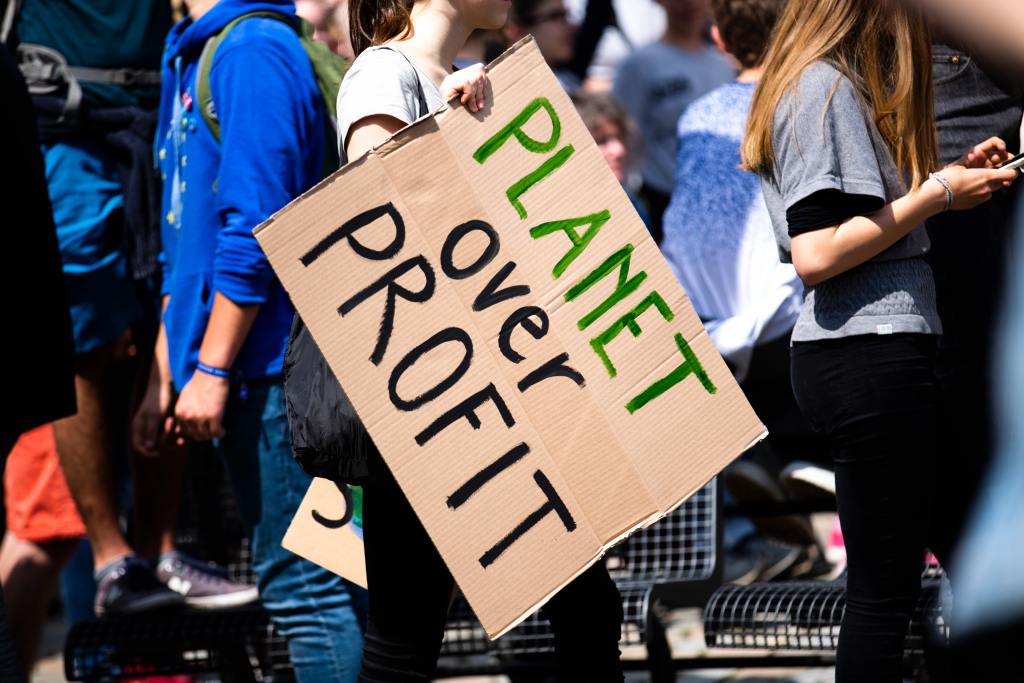
As one of the most pressing global challenges of our time, climate change and its far-reaching consequences touch every corner of the planet.
Melting ice caps continue to disrupt ecosystems and cause increasingly unpredictable weather patterns. The rising sea levels that result from that threaten coastal communities,
while severe droughts and flooding jeopardize food security and livelihoods.
The global consensus of combating climate change has given rise to various strategies to reduce carbon emissions, not just across governments, but even private sectors and industries, as well. One vital tool in this campaign is the introduction and use of carbon credits.
But what are carbon credits, and how do they work? How is it helping the fight against climate change? And finally, how can individuals and homeowners take part in it, too? Let’s dive into this topic today.
Understanding Carbon Credits
Carbon credits are one of the world’s current sustainability solutions. Often seen as a cornerstone of climate change mitigation efforts, they play a pivotal role in reducing carbon emissions.
These ‘credits’ act as a financial incentive for businesses and individuals to take measurable steps to reduce their carbon footprint. The core concept is relatively simple: if an entity emits less carbon dioxide or other greenhouse gasses than a predetermined baseline, they earn carbon credits. These credits can then be sold or traded in the carbon market, allowing businesses and organizations to compensate for their unavoidable emissions by investing in carbon reduction projects elsewhere.
By creating a financial value for carbon emissions reductions, carbon credits motivate entities to adopt cleaner technologies, improve energy efficiency, and invest in renewable energy sources.
What Are the Main Benefits of Carbon Credits?
- Economic Incentives: Carbon credits create a financial incentive for industries to innovate and adopt cleaner practices. This can result in cost savings through reduced energy consumption and increased operational efficiency.
- Environmental Benefits: Carbon credit projects, such as reforestation and renewable energy installations, directly contribute to carbon sequestration and emissions reduction, which helps combat climate change.
- Global Collaboration: Carbon credit programs facilitate international cooperation. They provide a platform for developed countries to support emission reductions in developing nations, fostering a more equitable approach to climate action.
- Carbon Neutrality: Organizations can achieve carbon neutrality by purchasing carbon credits to offset their remaining emissions, signaling a commitment to sustainability and environmental responsibility.
Understanding Carbon Footprint and Emission

Before we go any further, we need to understand first why there is an urgent need for this system in the first place.
According to a Carbon Trust quote from this Carbon Footprint factsheet:
A carbon footprint is the total greenhouse gas (GHG) emissions caused directly and indirectly by an individual, organization, event or product.
What this basically means is everyone and (most of) everything leaves their own carbon footprint, no matter how small. However, the start of the exponential increase of the world’s carbon footprint can be traced back to the years between 1760-1840, during the First Industrial Revolution. It was back then that people began using machines to manufacture and transport goods. The first full-scale locomotive system, debuted in 1804, contributed to the proliferation of steam engines powered by burning fuels, which includes coal, oil, and wood.
Flash forward to the 1900s, and CO2 emissions have continued to dramatically increase by 90%, with industrial processes like fossil fuel combustion contributing almost 80% of the total emissions of greenhouse gasses.
Carbon Credit Programs and Initiatives
In the US, carbon crediting comes in several initiatives, most famous of which is the cap-and-trade program.
The cap-and-trade program is also often referred to as a market system because it creates an exchange value for greenhouse gas (GHG) emissions. The program, according to its proponents, incentivizes companies to invest in cleaner technologies, instead of buying increasingly expensive permits yearly.
One of this program’s earliest forms is the US Clean Air Act of 1990. Passed to regulate airborne emissions in the country, it is credited to have substantially reduced emissions of sulfur dioxide from coal-fired power plants by the Environmental Defense Fund.

Other carbon credit initiatives and programs include the following:
- The Kyoto Protocol – a carbon credit proposal developed by the United Nations’ Intergovernmental Panel on Climate Change (IPCC) in 1997. The Protocol divided countries into two main groups: developing and industrialized.
Both groups operated their own emissions trading markets, and could surplus their credits to other countries that didn’t meet their carbon emission goals.
- The Paris Climate Agreement – an Accord created among leaders across more than 190 countries to reduce GHG emissions, in a goal to “limit the global temperature increase to below 2 degrees Celsius (36 degrees Fahrenheit) above pre-industrial levels by the year 2100.”
It was signed in 2015, and while the United States dropped out during President Trump’s administration, it later rejoined the Agreement under President Biden’s term (2021).
Monitoring and Calculating Carbon Credits
Generally, calculating carbon credits follows the same standard across most countries. It’s also important to note that the more complex your organization, the more challenging it is to monitor and calculate your emissions. There are online calculators available that can generate your total emissions after you fill out the necessary information.
That said, if you want to figure out how to manually calculate your emissions, here are five steps that companies follow:
1.Determine GHG-producing activities.
This includes identifying direct emissions (combustion boilers, furnaces, chemical processing plants/machines), energy indirect (emissions produced by energy and electricity use), and other indirect (which includes travel emissions, waste disposal, or material and fuel purchases).
2. Quantify emission producing activities.
This is often done by looking into the activity data of emission factors. That generally means looking through receipts, bills, and invoices (electricity and water bills, fuel receipts, and invoices for goods and services availed). This is often monitored
3.Verify emission factors of major GHGs.
According to the guide from the Department for Environment, Food and Rural Affairs (DEFRA) in the UK, different activities and fuels have varying emission factors (EF). The formula is quite straightforward:
Activity data * Emission factor = GHG emission
Activity data equals the total use of a resource within the year, multiplied by the EF of all the GHGs generated by that certain activity, which results in the total GHG emissions for that activity.
- The top six GHG pollutants, each with their own EF, are the following:
- Carbon dioxide (CO2),
- Methane (CH4),
- Nitrous oxide (N2O),
- Hydrofluorocarbons (HFCs),
- Perfluorocarbons (PFCs), and
- Sulfur hexafluoride (SF6).
Check out the Environment Protection Agency (EPA) Greenhouse Emission Inventories for a list of the EFs of various resources and fuels. Even food and drinks have their own EF values, as well, which you can find here in the Intergovernmental Panel on Climate Change (IPCC) Guidelines for National Greenhouse Gas Inventories.
4.Convert EFs to their CO2 equivalent.
Each pollutant has its own Global Warming Potential (GWP) because they don’t cause the same level of environmental damage. So, to get a more accurate emission value, multiply the EF of each pollutant with its GWP value, and you get its CO2 equivalent (CO2e).
5.Compute.
The last step is to calculate your total emissions for the year. It should all be in their CO2 equivalent and in tonnes (2204.6 pounds/ton). Then to get your carbon credit equivalent, multiply that with the price of carbon per tonne based on the rate of the market you’re buying from.
For example, if your organization produces 100 tonnes of CO2e a year, and the market price is $15/ton of CO2e, then you’ll have to buy $1,500 worth of carbon credits to offset your emissions. Again, the price may vary depending on the market.
Carbon Credits: Paving the Way to a Sustainable Future

In the battle against climate change, carbon credits emerge as a vital ally. Their significance lies in their ability to motivate industries to embrace cleaner practices, invest in renewable energy, and support carbon-reduction initiatives. By assigning a tangible value to emissions reductions, they foster global cooperation in the fight against climate change.
However, while carbon credits hold great promise, they are not a cure-all. They should complement, not replace, direct emissions reduction efforts. Strategies like upcycling unwanted items and donating used furniture, instead of throwing them into landfills, massively impact these environmental preservation efforts in a positive way.
As global commitment to combat climate change intensifies, we can expect to see more innovation in carbon offset projects and their integration into corporate sustainability strategies. Here at Remoov, we continue to support a sustainable tomorrow, and if you want to help, learn more about our services here.
About Remoov
Remoov (www.remoovit.com) is the all-in-one decluttering service. The company picks up everything that a household or company wants to resell, donate or dispose – making the process of moving, downsizing, redecorating or selling an estate faster, less costly and more sustainable.
Sources:
- The Ultimate Guide to Understanding Carbon Credits – Carbon Credits.com
- Carbon Credits and How They Can Offset Your Carbon Footprint – Investopedia
- Carbon Footprint Factsheet – Center for Sustainable Systems, University of Michigan
- Global Greenhouse Gas Emissions Data – United States Environmental Protection Agency
- How to Calculate Carbon Credits? (5 Easy Steps to Follow) – Carbon Credits.com
